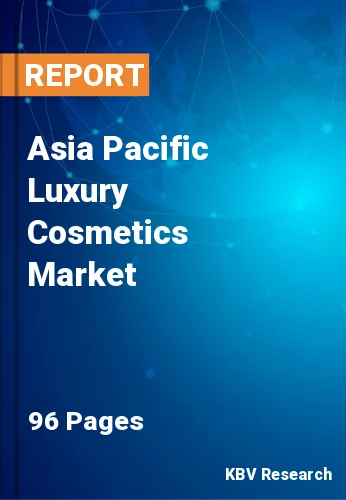The Asia Pacific Luxury Cosmetics Market would witness market growth of 7.4% CAGR during the forecast period (2019-2025). Luxury products have risen up to be a lucrative industry specifically in the region, due to the high consumer purchasing power in the countries of these regions. However, the popularity of luxury cosmetics has extended across the Asian countries as well owing to the increasing disposable income and the prevalent skin and hair care trends in the region.
The demand for luxury cosmetics on the global platform is increasing rapidly. Market players are inclining towards key developmental strategies like product launch and acquisitions to signify their existence in the luxury cosmetics market. Companies are introducing new product innovations backed by robust R&D to lift the demand for luxury cosmetics. Additionally, the developing organic cosmetic products sector has added to the growth of the overall luxury cosmetics market.
The urbanization is broadening rapidly, and so is the disposable income in growing economies. In par with this trend, the demand for natural & organic cosmetics is rising remarkably with a surge in online retail. These are significant factors that have boosted the growth of the luxury cosmetics market across the globe.
The industry players emphasize on the prevalent factors that have constantly contributed towards an increase in the adoption of luxury cosmetics. These include growth in upper-middle-class population, increased consumer interest in distinct and premium products, rising online beauty expenditure, and spreading out of the social network.
On the basis of type, the market covers organic and conventional products. Conventional cosmetics accounted for the largest market share in the luxury cosmetics market, since their manufacturing is simple, they are economical to manufactures and have a longer shelf life relative to natural cosmetics. However, the organic cosmetics market segment is probable to develop at a greater pace of growth as customers become more aware of their wellness and therefore focus on naturally and organically produced products.
A growing tendency towards a trendy lifestyle is one of the main factors accountable for the inflation of the luxury cosmetics industry. This is mainly due to an rise in consumer purchasing power combined with commitment to such products. At the same time, as the economy is expanding, income is increasing and living standards are increasing. There's a knack for anything related to fashion that is becoming essential to be part of the social circles and the hangouts. Along with the celebrities, A- listers, or the page 3, even the middle class population wants to be in the same boat and wishes to replicate the trend. They don't want to get found carrying the same clothes, shoes, bags, or glasses, and make-up is no exception in this trend. The increasing geriatric population and young people's use of cosmetics pushes the domestic producers to provide inexpensive cost ranges, without compromising on quality.
The Luxury Cosmetics market report has segmented the market on the basis of type, product type, end-user, distribution channel, and region. Organic and conventional products are covered in the type segment. The product type segment comprises skincare, makeup, haircare, and fragrances. On the basis of end-user, the market is categorized into males and females. The distribution channel segment includes e-commerce, specialty/mono-brand stores, supermarket/hypermarket, and others. The regional market is studied across China, India, Japan, South Korea, Singapore, Malaysia and Rest of Asia Pacific.
The major market players expanding their reach in the global luxury cosmetics market are L’Oréal, Christian Dior, Shiseido Company, Limited, Puig, Coty Inc., Revlon, Inc., Kao Corporation, Oriflame Cosmetics AG, The Estée Lauder Companies Inc., and KOSé Corporation. The market players are adopting progressive strategies to leverage the opportunities of the market. Companies are focusing on innovative strategies to compete in the market space.
Market Segmentation:
By Type
By Product Type
By Distribution Channel
By End User
By Country
Companies Profiled
Our team of dedicated experts can provide you with attractive expansion opportunities for your business.

